A While back, I did a Dad's Army in Kaiserreich postwho do you think you are fooling kaiser wilhelm
You are using an out of date browser. It may not display this or other websites correctly.
You should upgrade or use an alternative browser.
You should upgrade or use an alternative browser.
Photos of the Kaiserreich
- Thread starter pattontank12
- Start date
Deleted member 82792
Can you please provide a link?A While back, I did a Dad's Army in Kaiserreich post
A J-7II taking off on a interception drill. The J-7II was built to be a point defence interceptor, not an air-defence fighter slated for combat missions, basically a short-range day fighter. Due to being cheap, fast, inexpensive and simple to maintain, the essence of this fighter’s existence was to be used in large groups to overcome the technologically advanced Western aircraft. Essentially it was a missile which houses a pilot, two 30 mm cannon and two PL-2 air-to-air missiles. The sleek airframe was made with aluminium alloys, steel, magnesium and fibreglass. The air-intake cone automatically adjusts during the flight to help the aircraft remain aerodynamic. The fighter sported a delta wing with a 57° leading edge and even the all-moving tailplane utilizes the swept feature. Everything about this jet focus on speed which lends it reaching out to the Mach 2 range. The strength of the aircraft is its speed in a straight line whether in a climb, level flight or a dive, however, when it turns at all, it haemorrhages its energy and when it gets below 700 kph, it is difficult to get back up to speed without diving to make up that speed. When caught near the ground and going slow will be extremely frustrating for a J-7 pilot.
A J-7E/G taking off to the northeastern frontier with Russia.
The J-7E/G has an improved double Delta wing in the first version of all the with Japanese And Pacific states Technology help vastly improve it's performance and flight characteristics. The double Delta wing helps To increase maneuverability compared to regular delta wing
The J-7 series remains in service as is the main second line the fighter and interceptor of the National revolutionary army Air Force. It also extremely popular export fighter under the designation F-7 Airguard for example the Iranian peoples Air Force.it being replaced as the main fighter in Chinese service by J-10 and The fifth generation fighters like J-20 and J-31

Russian SU-9 in a airfield facing the Reichspakt . SU-9 prove the match for the English Electric Lightning of The commonwealth and the German me-364 it was not exported to Allied states like NRC Era United States
inspired bye @theg*ddam*hoi2fan
Last edited:
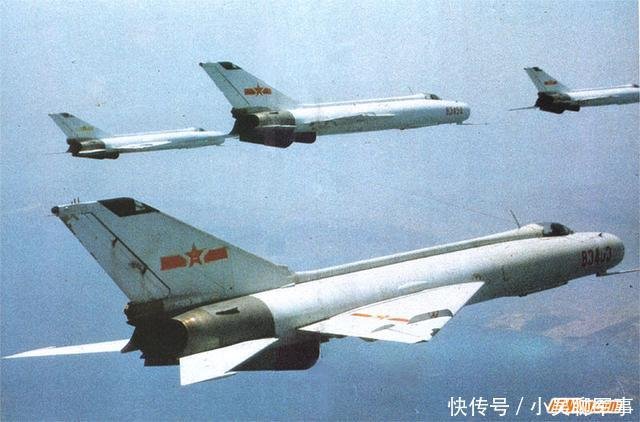
A J-8IE Squadron patrolling The Southwest border. J-8IE is the Final version of the J-8I series. J-8IE is equipped with a type 204 (JL-7) mono-pulse fire-control radar, SM-8A aeronautical optical gun-sight, onboard computer, new cockpit panel, and redesign ejection escape system and oxygen supply system. The original two Type 30-I 30mm cannons were replaced by two Type 23-III 23mm cannons. The four under-wing stores stations are capable of carrying the more advanced PL-5 series short-range AAM. These aircraft were also fitted with an improved electronic countermeasures (ECM) suite including KJ-8602B all-aspect radar warning receiver (RWR).The unsatisfactory performance of the J-8I led to a very short production run of 20–50 aircraft and the J-8I has slowly began being phased out as early as the 1990s.

A J-8II taking off to The northwest border with Russia .The J-8II series appear quite different from the original J-8, with a new forward fuselage, intake ramps with splitter plates and nose structure more reminiscent of the Mitsubishi Chuuhi or Sukhoi Su-15 to house a new, more powerful radar. The J-8II is powered by two Wopen-13A (WP-13A) engines. The design and development team was led by Gu Songfen, who is also a key member of J-8I design team. The J-8II remains as interceptor of the NRAAF do to it various issues it was not exported
Indian Federation Vijayanta tanks in a exercise in Northwest India. The Vijayanta is a Indian version of the famed Commonwealth centurion which is well known for service in the Second north American war. The Vijayanta served concurrently in the often forgotten Burma war In which Indian and Royal Burmese army troops versus the
Kachin National army and Shan Federal army as well as the Chinese national volunteer army during the early 50s
Inspired bye @theg*ddam*hoi2fan
Last edited:
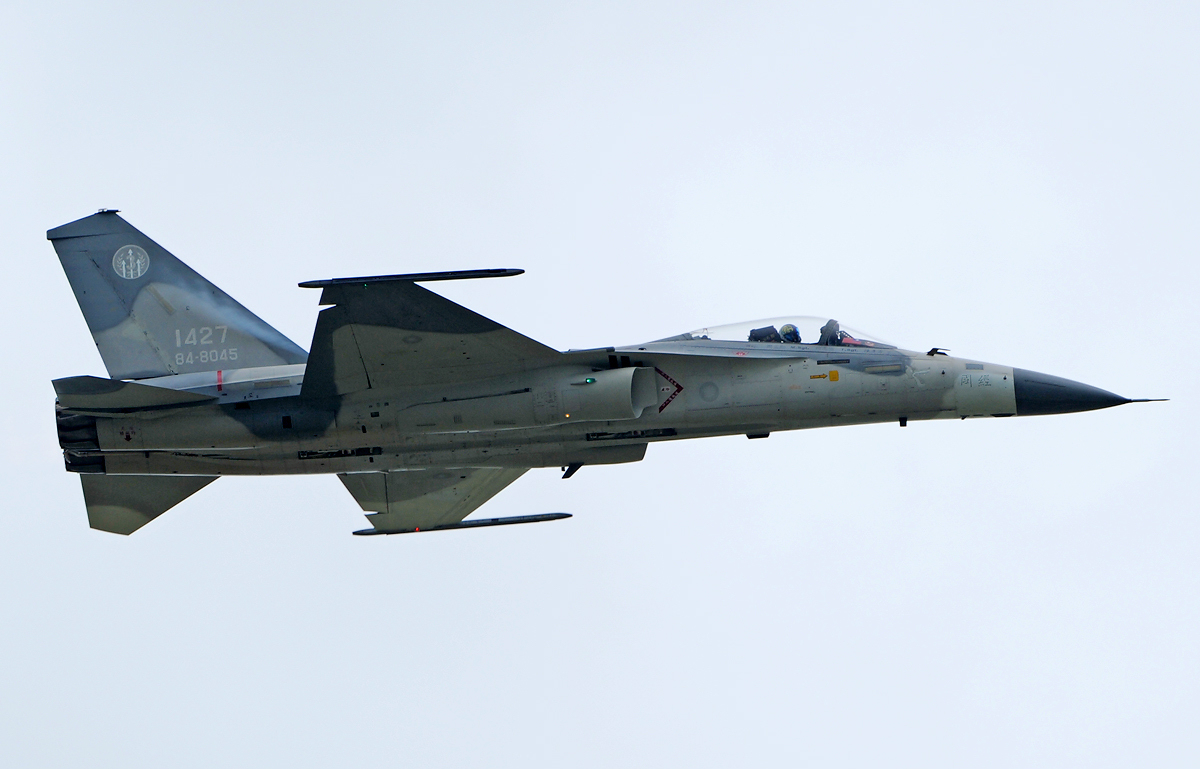
A NRAAF Northrop-Nanchang now Hongdu J-14 taking off from an airbase in 2012. The J-14 is the first major Joint production between China and the Pacific states. The cooperation between
Northrop And Nanchang Aircraft Manufacturing Corporation now Hongdu Aviation Industry (Group) Corporation beginning In the late 80s as Northrop was looking to develop a replacement for the popular F-5 Liberty fighter that sold well within APCP as well as Looking to expand into other parts of the world. With a warming of relations between EASA and APCP in 80s. Northrop was Looking for a partner within the now booming Chinese Market it found it in the form of Nanchang Aircraft For it's part Nanchang (Hongdu) is known for manufacturing the sturdy Q-5 Ground attack plane based off of J-6 they previously trying tried to get into The field of manufacturing fighters in the form of the lightweight fighter J-12 which proved to be fair to light weight to be effective fighter. The J-14 proved to be effective light weight fighter and a worthy successor to the f-5 Liberty . It's exported under the designation f-14 Thundershark.
It is in limited service in the NRAAF with the competing chenghu j-10 and shenyang J-11 winning the majority of the orders for the Air Force. It's quite a popular export fighter serving in the Iranian people's Air Force. The various regional Air Force's of the Ottoman Federation and the Imperial Ethiopian Air Force to name a few it also compares favorably to the computing chenghu JF-17 Thunder in performance
A North American-Sukhoi F-15 Flanker patrolling the US-Pacific states frontier The last major joint fighter project along with the tu-160 Striker strategic bomber, between the Russian State and NRC era United States.
Inspired bye @theg*ddam*hoi2fan
Last edited:
Deleted member 82792
What's Garfield like I wonder.
Syndicalist propaganda comic featuring 'Felix the Cat' produced during the American Civil War
While the character of Felix the Cat, having made his first debut in 1919, originally had no political connotations of any kind. However, during the Second American Civil War, he was quickly appropriated by the CSA in their own propaganda, both due to him already being a widely recognised cultural icon by the 1930s thanks to all the animated short films in which he was featured in, and the character being a black cat, just as the IWW's own 'sabo-tabby' was.
While the CSA was eventually defeated in the Second Civil War, by that point Felix the Cat's association with the far-left had already been deeply ingrained into public consciousness, not just in the United States, but also the rest of the world thanks to the propaganda effort of the Internationale's member states, with 'sabo-tabby' and Felix the Cat had became one in the same. This continued even after Otto Messmer, the co-creator of the character, had publicly expressed his dismay at Felix being used as a symbol of international syndicalism , claiming that he was forced by the CSA to continue his work of producing new Felix comics during the war from his home in New Jersey, and has since disavowed the chararter.
Even all into the 21st century, fan-made Felix the Cat comics can still often be found on internet message boards and online forums as a symbol associated with the far-left, with him advocating for various act of workplace sabotage and political violence against members of 'the capitalist system of murder, theft, and exploitation'.
Deleted member 82792
Where's it from?The American Flag after the 2nd Weltkrieg, a far departure from the Stars and Stripes.View attachment 435281
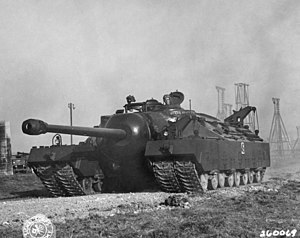
T-28 attached to General Carter's forces outside Budapest (1946)

UASR Cavalrymen near Manitoba (1942) - 4 months before Canadian surrender

French Loyalist Tirrallieurs (1944) - Though the northern territories fell, the Dakar Government would maintain France in Exile for another 40 years in Senegal, Mali and Mauritania
My take on a left wing Brazil:

João Mangabeira¹ (1880-1966) pictured in 1939, was the first left president elected in Brazil, ruling from 1936 until 1940 and later served as a senator for his home state, Rio de Janeiro until his retirement in 1962. Mangabeira was elected after a arduous campaign being bombed by the estabilishment and the right but his support coming from the trade unions and a general wish to change on the society led to his election
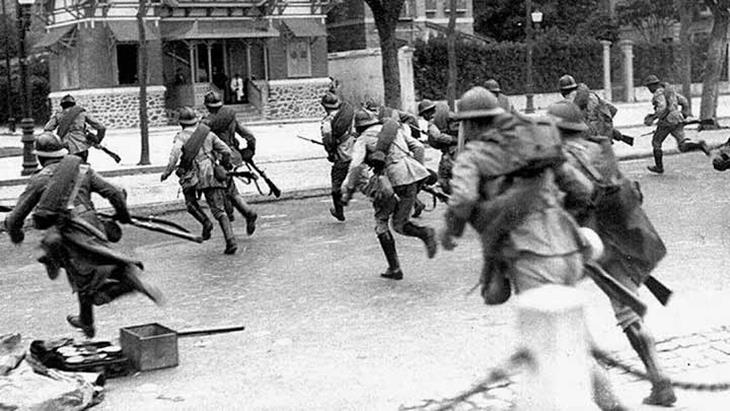
The "intentona militar²" was a coup attempt led by the clique of officers loyal to general Dutra against what they called "the totalist" menace, that tried to seize control of the capital and "clean" brazil from the totalist menace. The failure to convince the population to rise and the high popularity of Mangabeira made the coup flop on the second day.
¹He was considerably older than his pic on KR shows
²I switched name with the communist coup attempt in 1936

João Mangabeira¹ (1880-1966) pictured in 1939, was the first left president elected in Brazil, ruling from 1936 until 1940 and later served as a senator for his home state, Rio de Janeiro until his retirement in 1962. Mangabeira was elected after a arduous campaign being bombed by the estabilishment and the right but his support coming from the trade unions and a general wish to change on the society led to his election

The "intentona militar²" was a coup attempt led by the clique of officers loyal to general Dutra against what they called "the totalist" menace, that tried to seize control of the capital and "clean" brazil from the totalist menace. The failure to convince the population to rise and the high popularity of Mangabeira made the coup flop on the second day.
¹He was considerably older than his pic on KR shows
²I switched name with the communist coup attempt in 1936
Deleted member 82792
How about some Internationale or Co-Prosperity colonies?
ISF Ares, artist's concept, greenhouse, work areas, solar power farm. Living quarters are in the central mound, covered in dirt to help protect astronauts from radiation.
ISF Ares is the Mars base that the ISF plans to build as part of the currently underway Operation Ares, which will be the first manned mission to Mars, and will involve building the first permanent Mars base.
While Operation Ares is equipped to allow for a return trip, the hope is that it will be able to set up a, for the most part, self-sufficient base, which will serve as the foundation for an entire colony, which is currently in planning under the title of Operation Athena.
The base is equipped to allow the inhabitants to manufacture basic equipment and spare parts, search for, mine, and process minerals, grow food and replenish oxygen, and perform surgery.

Artist's rendition of Neues Berlin (New Berlin), the Kaiserreiches Deutsche Luftstreitkräfte's (KDL) first permanent moon base, in its initial form after construction in 2017.
Unlike ISF Luna, the first permanent moon base, Neues Berlin was built to be, for the most part, self-sufficient from the start, able to grow its own food, recycle air, power itself, and manufacture most of the spare parts required for repairs. ISF Luna was upgraded to become self-sufficient in 2018.
The base has since expanded quite a bit, and there are rumors that the KDL is planning on petitioning the Kaiser himself to declare Neues Berlin a proper colony.
Currently, the only civilian colony on the Moon is the British Empire's Kumar's Landing, named for Flight Lieutenant Anil Singh Kumar of the British ISF, the first man to walk on the Moon. It is located out side of ISF Luna, and the majority of the inhabitants work in the various supply bases, running the solar power farms, the actual farms, mining, etc.
Thoughts? Suggestions?
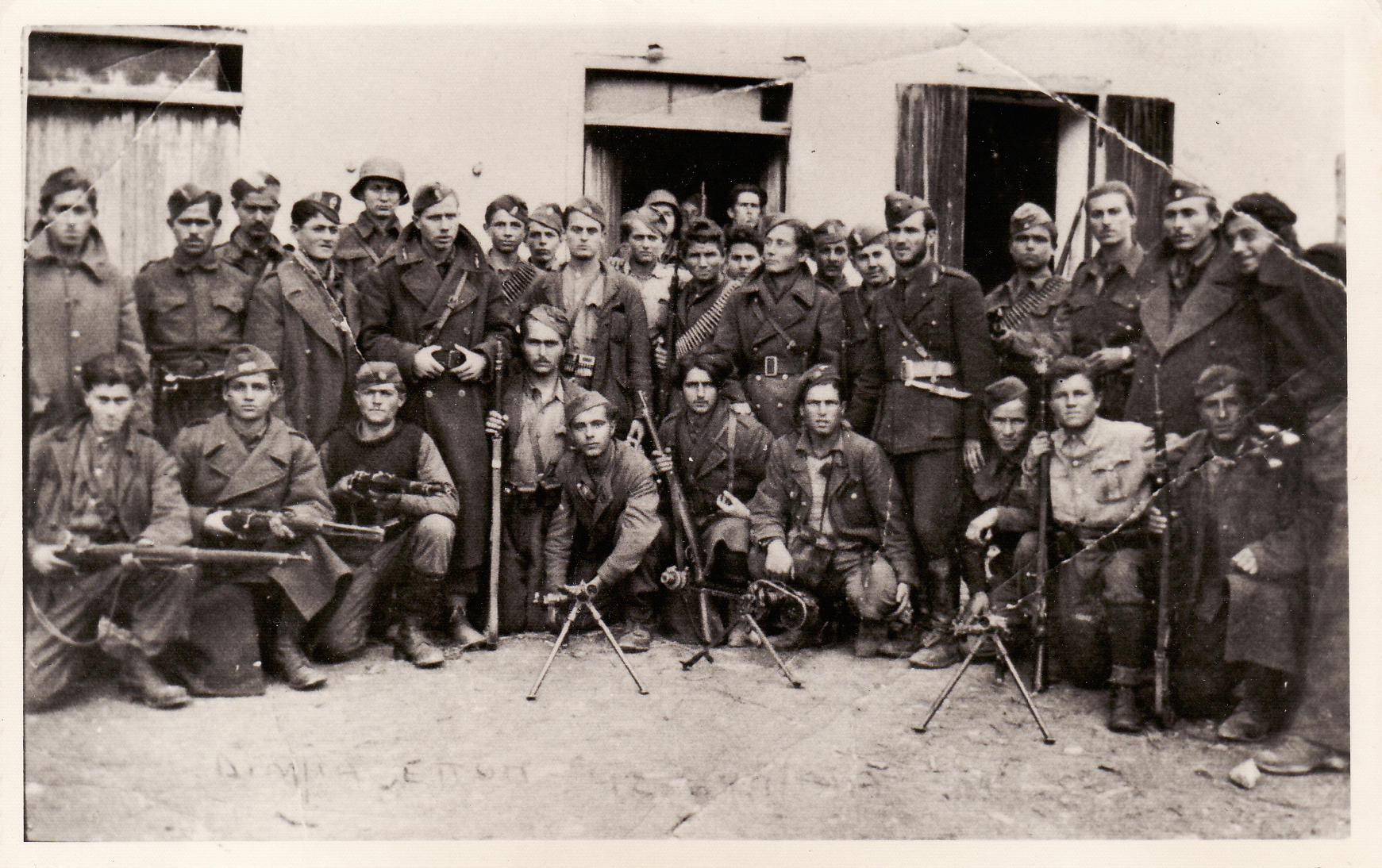
Socialist Greek Partisans near Thessaloniki (1944) - Though the Hellenic Socialist Republic held the Peloponnese, the Danubian invasion still necessitated wide scale civilian resistance, the Danubian occupation of Northern Greece ended with the Federation's collapse and withdrawal in 1946.
Deleted member 82792
Could some please translate translate these posters? I can't read German.
Pretty sure those guys are the Silver Legion since they're separate from the Minutemen.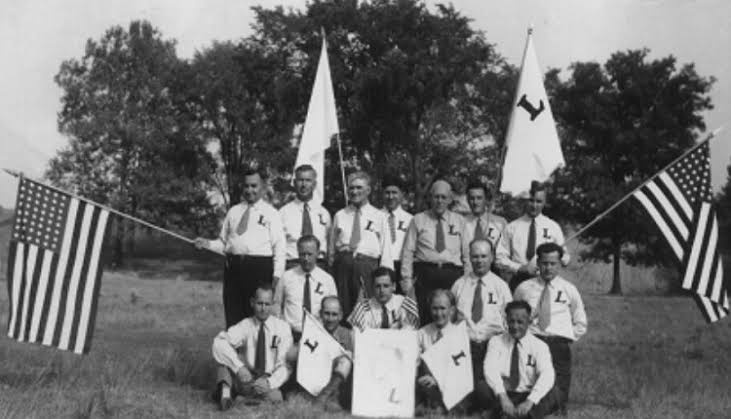
AUS Minutemen with captured USA flags
Deleted member 107125
Are they? My canon is that Pelley leads the minutemenPretty sure those guys are the Silver Legion since they're separate from the Minutemen.
It was updated last year where the Silver Legion and the American First Party are both separate organizations that happen to work together. Heck they had updated the whole USA, CSA and AUS including the Civil War.Are they? My canon is that Pelley leads the minutemen
Infantry Art (Note that the Silver Shirt Legionnaire and Minutemen are both seperate):
New Focus Tree:

New Political Focus:


New Focus Tree:

New Political Focus:

Share:
